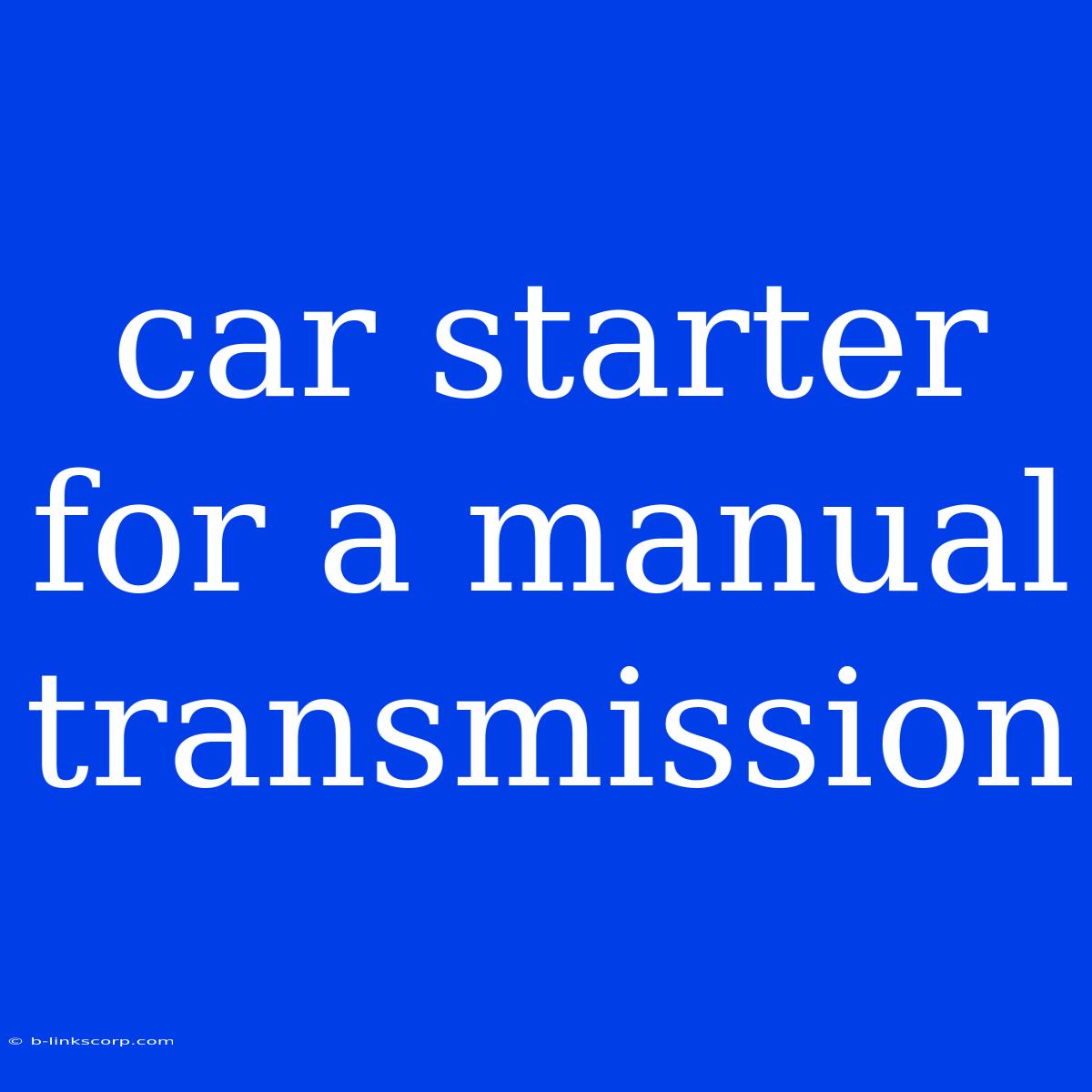How a Car Starter Works in a Manual Transmission Vehicle
A car starter is a vital component in any vehicle, regardless of whether it has an automatic or manual transmission. It's the device that gets your engine running, allowing you to drive. While the basic function remains the same, there are some subtle differences in how a car starter operates in a manual transmission vehicle compared to an automatic.
The Car Starter's Role
The car starter's primary function is to crank the engine. This means it spins the crankshaft, which in turn rotates the pistons and ultimately starts the combustion process. This process requires a lot of power, which is why a starter motor is involved.
How it Works
- Ignition Switch: When you turn the key to the "start" position, you complete an electrical circuit. This circuit sends power to the starter motor.
- Starter Motor: The starter motor is an electric motor that uses magnetic fields to turn a shaft. This shaft is connected to a gear known as the starter pinion.
- Starter Pinion: This gear engages with the flywheel, which is connected to the crankshaft. When the starter motor spins, it rotates the starter pinion, which in turn rotates the flywheel and crankshaft.
- Combustion: This rotation begins the combustion process, and the engine starts to run.
- Disengagement: Once the engine is running, the starter motor disengages from the flywheel. This is usually done via a solenoid, which pulls the starter pinion back into the starter motor.
Key Differences in Manual Transmissions
In a manual transmission vehicle, there are some key differences in how the car starter interacts with the vehicle's systems:
1. Clutch Engagement: When starting a manual transmission vehicle, the clutch pedal must be fully depressed. This disconnects the engine from the transmission, allowing the starter motor to crank the engine without resistance from the wheels.
2. Gear Selection: Unlike an automatic transmission, the gear selection in a manual vehicle plays no role in the starter's operation. The starter motor will function regardless of which gear is selected. However, it is generally recommended to start the vehicle in neutral.
3. Engine Speed: In a manual transmission, the engine speed can be controlled manually using the accelerator pedal. This allows you to rev the engine slightly before engaging the clutch, which can help in smoother starts, especially in cold weather.
Troubleshooting a Car Starter
If your car starter is not working, there are several potential problems:
- Dead Battery: The starter needs a strong battery to function properly. Check the battery voltage and ensure it is adequately charged.
- Faulty Ignition Switch: A faulty ignition switch may not be providing power to the starter motor.
- Starter Motor Issues: The starter motor itself could be faulty. It might be worn out, have damaged brushes, or have a broken solenoid.
- Starter Pinion Issues: The starter pinion could be worn out, preventing proper engagement with the flywheel.
If you are experiencing problems with your car starter, it is best to consult a mechanic for proper diagnosis and repair.
Conclusion
While a car starter in a manual transmission vehicle operates similarly to one in an automatic, there are some key differences in its interaction with the transmission and engine. Understanding these differences can help you start your manual transmission vehicle smoothly and safely.

